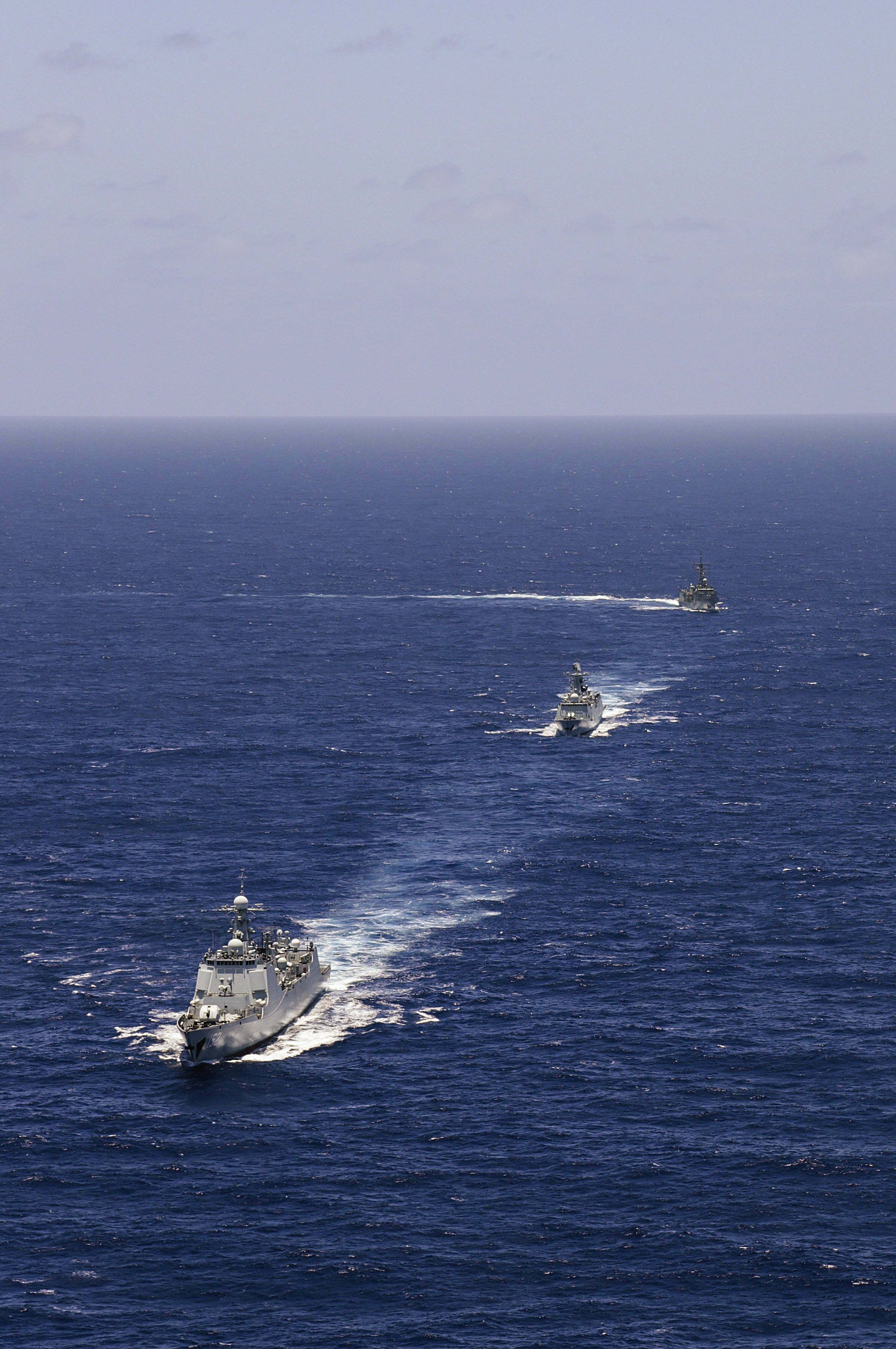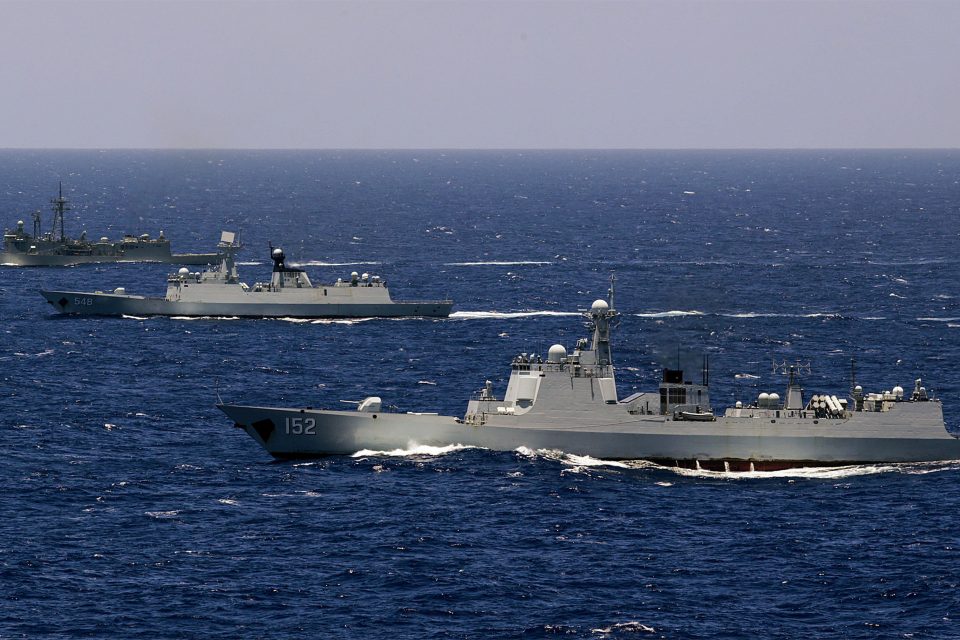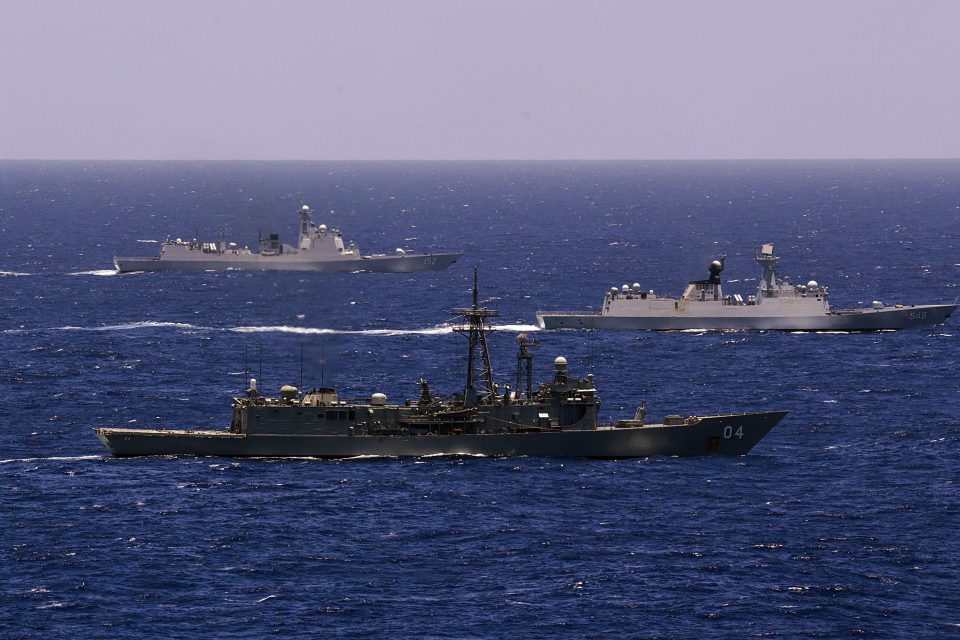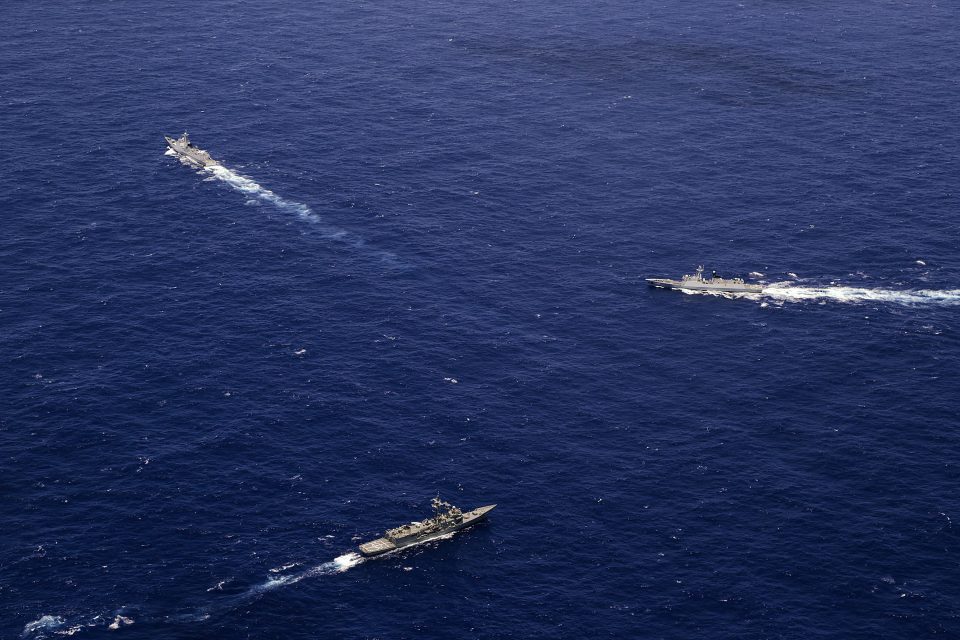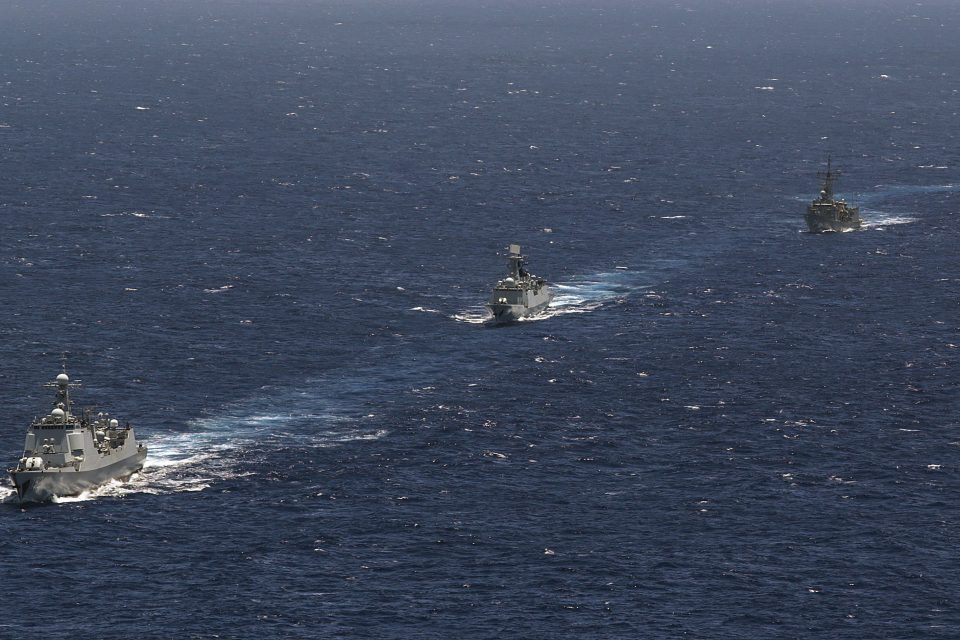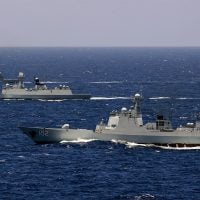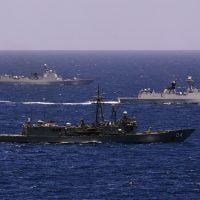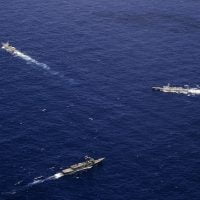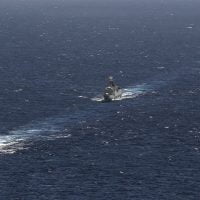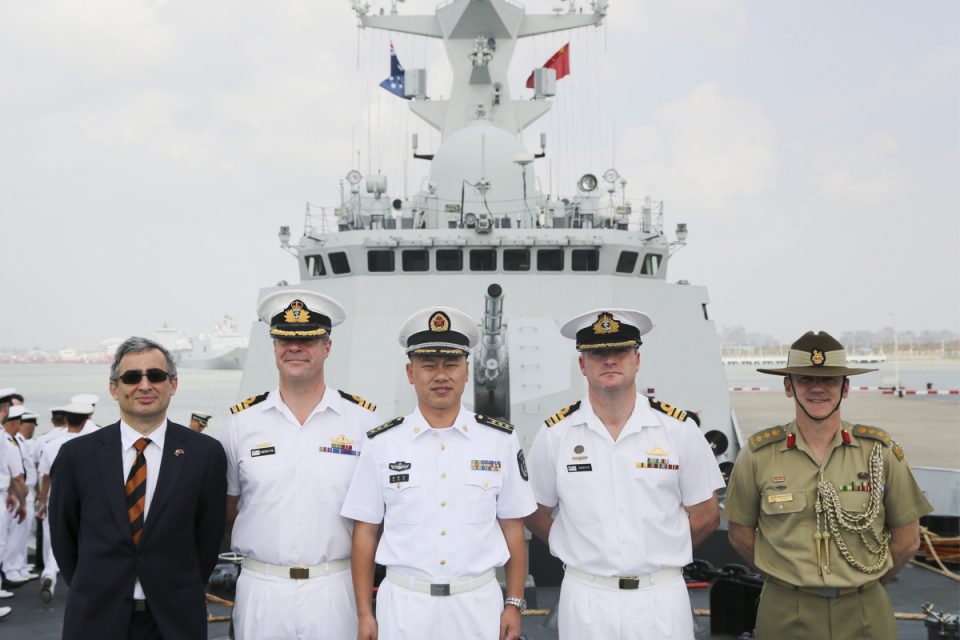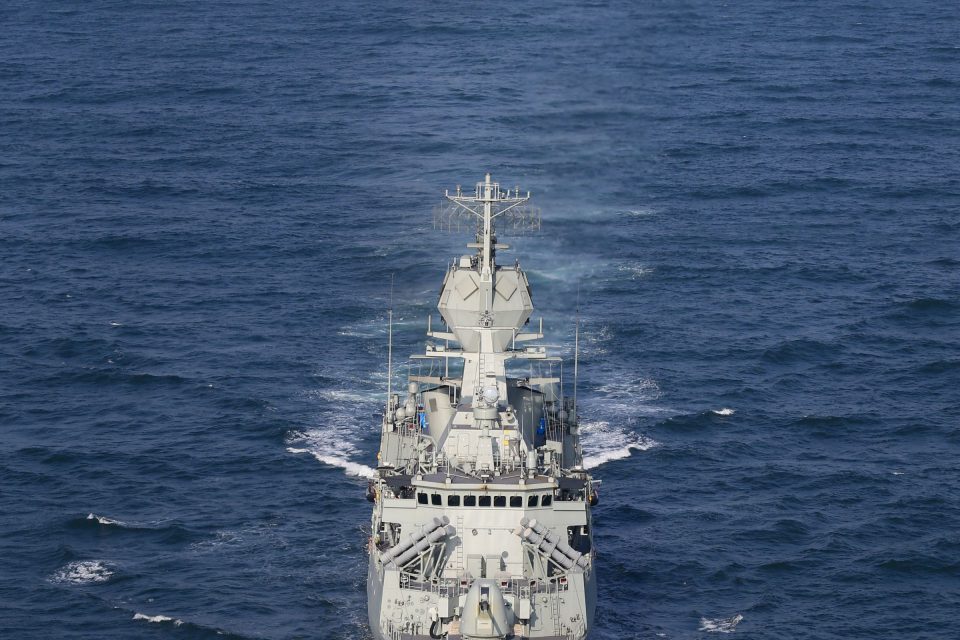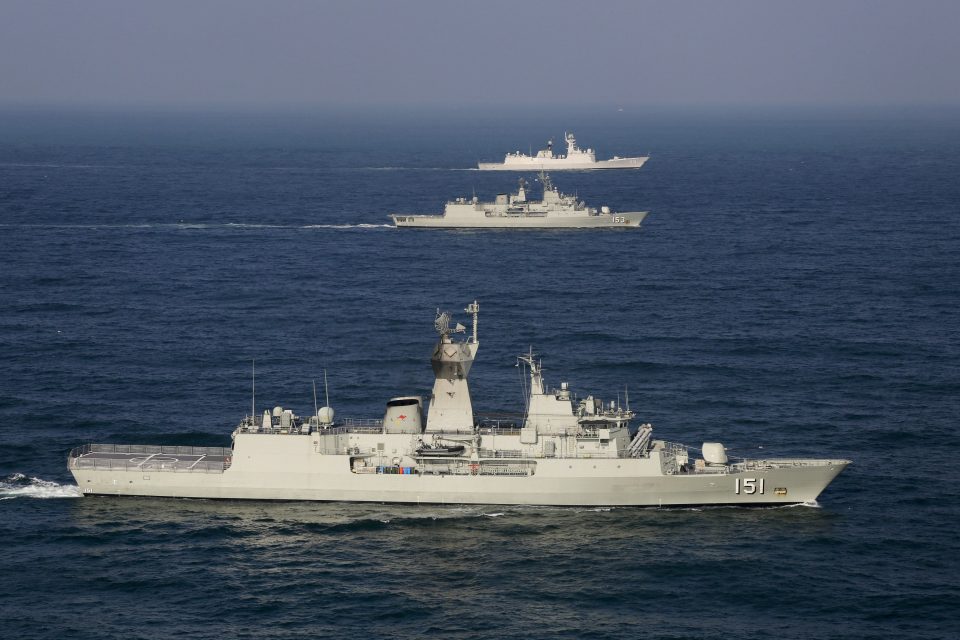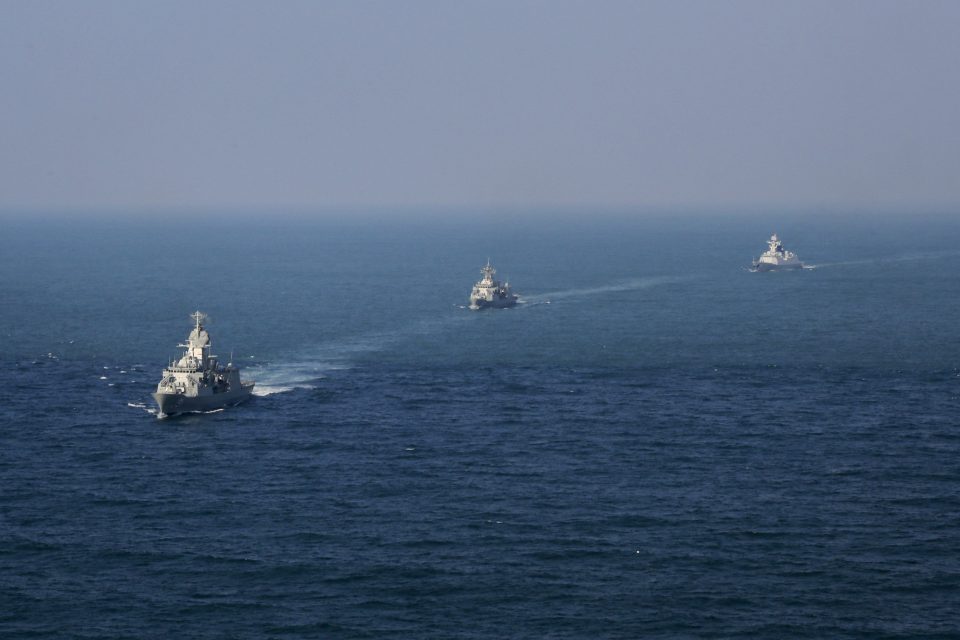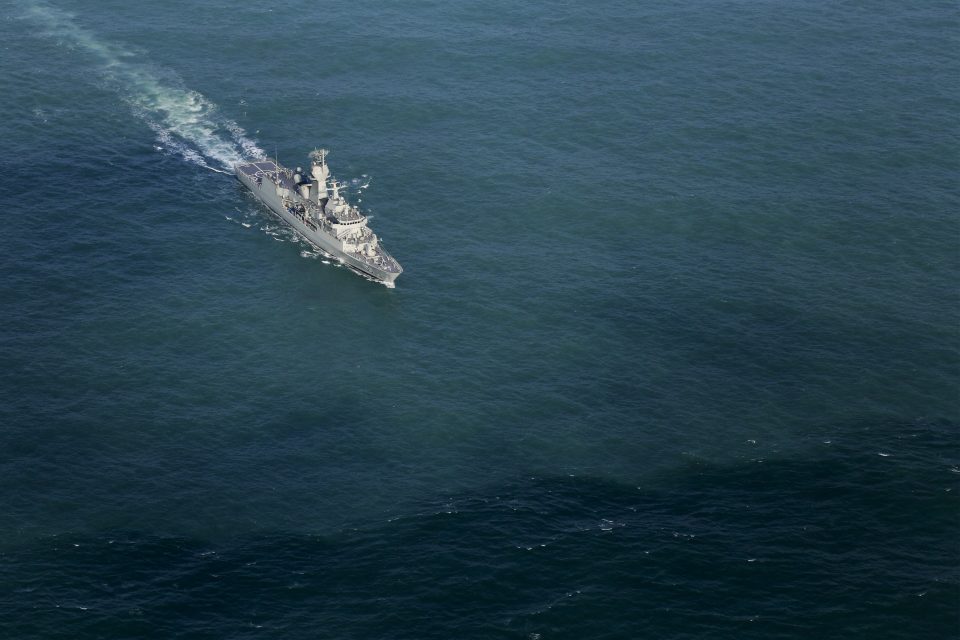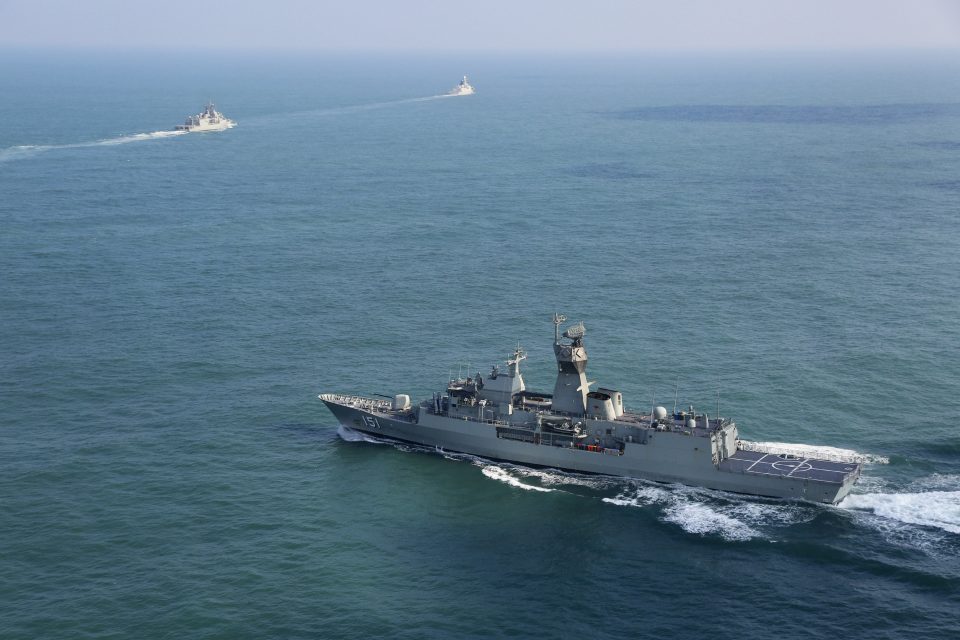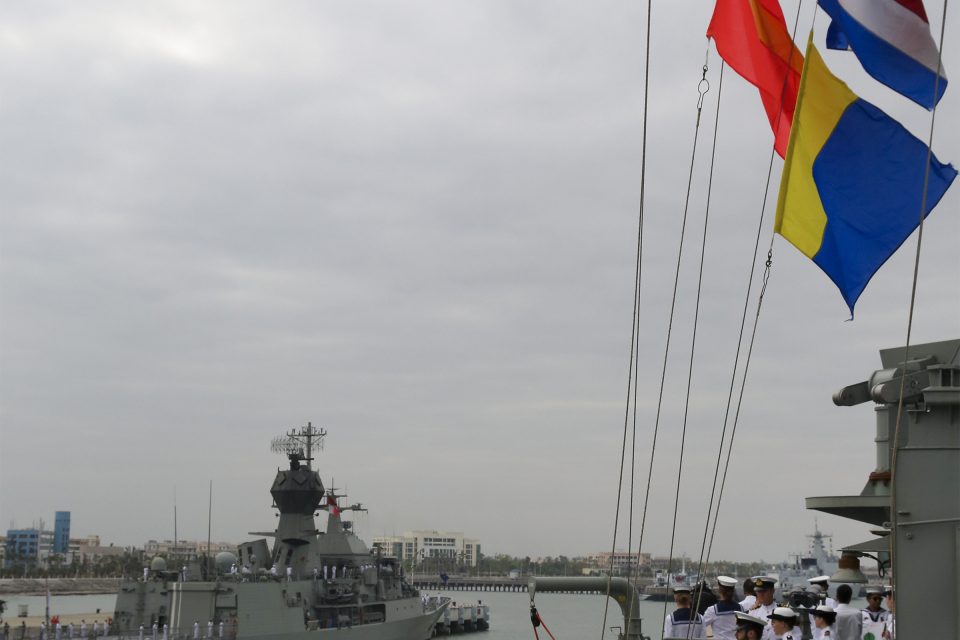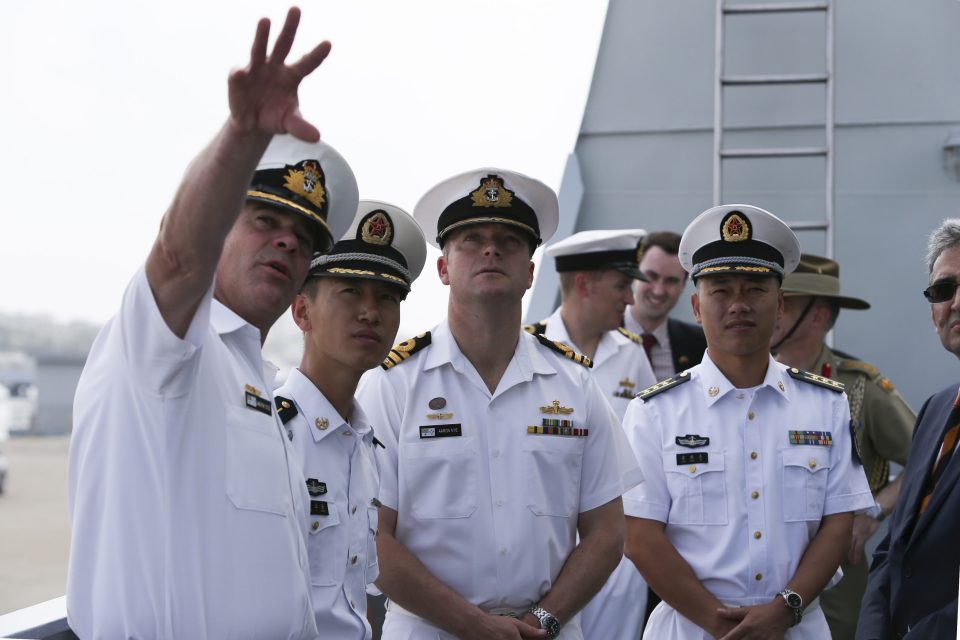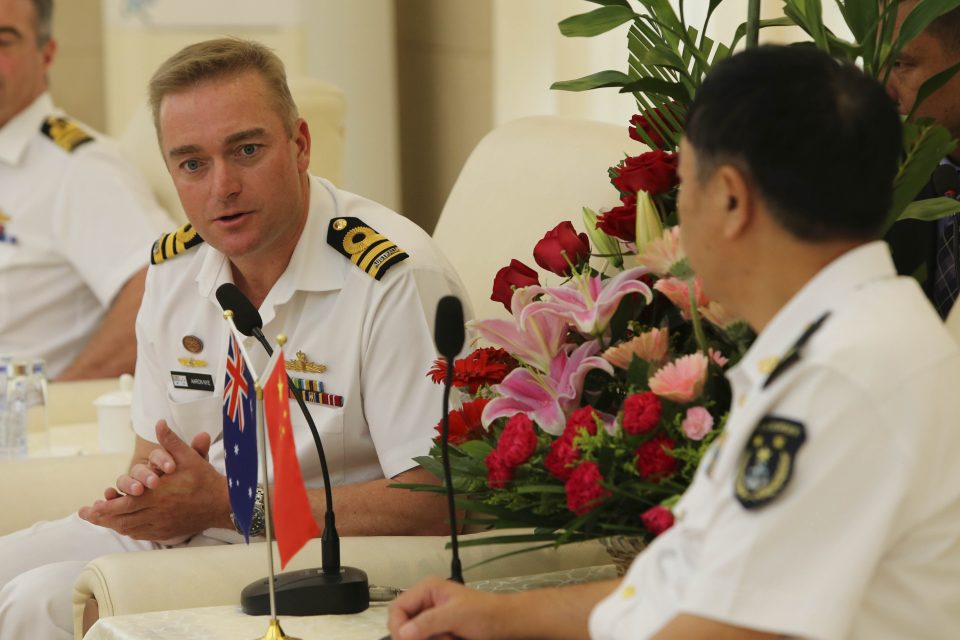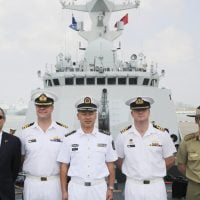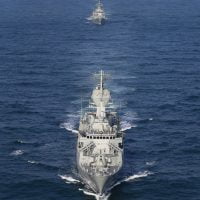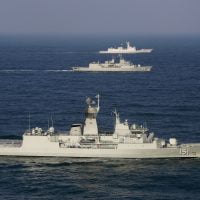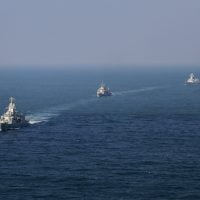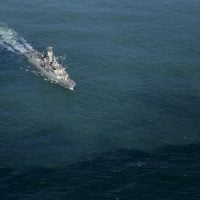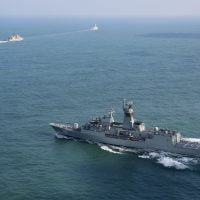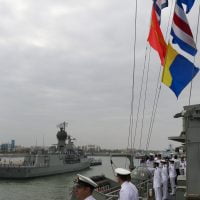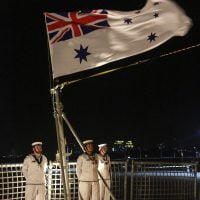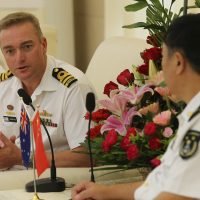2016-01-23 Recently, the Royal Australian Navy conducted an exercise with the Chinese Navy on its way to the Middle East.
And last Fall, the RAN visited China and made port calls and performed a rescue exercise as well.
According to the Australian Ministry of Defence in a piece published on January 4, 2016:
HMAS Darwin has conducted a passage exercise with the Chinese People’s Liberation Army-Navy (PLA-N) Escort Task Group 152 off the coast of Queensland.
The task group consists of three ships—the Luyang Class destroyer Jinan, (DDG-152), the Jiangkai Class frigate Yiyang (FFG-548), and the Fuchi Class replenishment ship Qindaohu. (AOR-886).
The task group spent five days in Brisbane from 2 January 2016.
The PLA-N task group, completed counter-piracy operations in the Gulf of Aden in 2015 before embarking on a global deployment that has seen the task group visit more than a dozen countries during the past five months.
The task group is in the final stages of its global deployment and will return to China in early 2016.
Australia’s Chief of Navy, Vice Admiral Tim Barrett, said the activity was a valuable opportunity for the Royal Australian Navy and the PLA-N, to operate together.
“The Royal Australian Navy works with China and all of Australia’s regional partners to provide a stable and cooperative security environment and encourages constructive relations between all militaries in the region,” VADML Barrett said.
“Activities such as this provide both countries with an opportunity to operate in close proximity and increase their knowledge of each other’s operating procedures.”
HMAS Darwin departed Sydney on 30 December to assume duties as part of Operation MANITOU, which is the Australian Government’s contribution to the international effort to promote maritime security, stability and prosperity in the Middle East Region.
HMAS Darwin is the 62nd deployment of an RAN ship to the Middle East.
As Edward Johnson noted in a Bloomberg news story published January 1, 2016:
Australia walks a diplomatic tightrope between its most important security ally, the U.S., and its largest trading partner, China.
The balancing act has come under pressure amid criticism by Prime Minister Malcolm Turnbull’s government of China’s territorial expansion into waters off its eastern and southern coasts.
One could add as well that the US Navy is forging its own relationship with the Chinese Navy even while the Chinese lay claim to more territory in the South China Sea.
The challenge is clear: how does cooperation impact on Chinese behavior?
Is it part of a reshaping of relationships or simply an input into the data bank of Chinese strategies to get what they want in the Pacific?
And last Fall, the Royal Australian Navy conducted port calls and exercises with the Chinese Navy.
According to the Australian Navy:
The Royal Australian Navy conducted a port visit and naval exercise with the People’s Liberation Army – Navy (PLA-N) in Zhanjiang, China during the period 31 October to 2 November.
The port visit by HMA Ships Stuart and Arunta to Zhanjiang included a combined planning session for the exercise, official functions with local dignitaries, sporting activities, discussions on the Code for Unplanned Encounters at Sea, and other mariner skills training.
The visit concluded today with a combined exercise involving joint search and rescue training, tactical evolutions, communications drills, and a live fire activity.
Chief of Navy Vice Admiral Tim Barrett, AO, CSC said the professional and cultural exchanges included in the visit will strengthen Australia’s defence ties with China.
“The conduct of these activities between navies is the oldest form of international diplomacy and is fundamental in developing our understanding and cooperation between the RAN and the PLA-N.”
It builds on previous visits RAN ships have made to China in 2010, 2012 and 2014 including when HMASWarramunga conducted the first live fire activity between the RAN and the PLA-N in 2010.
Australia is committed to maintaining strong and positive defence relations with China, and the Australian Defence Force works with the People’s Liberation Army to build mutual understanding and facilitate transparency.
The visit to China is part of the Royal Australian Navy’s routine regional engagement activities in both North and South East Asia. HMA Ships Stuart, Arunta and Sirius are participating in the deployment, which also includes exercises and port visits to the Philippines, Singapore, Japan, South Korea, Vietnam, Malaysia and Indonesia.
The ADF has a long history of engagement throughout Asia and regularly conducts such activities as part of its broad regional engagement program.


